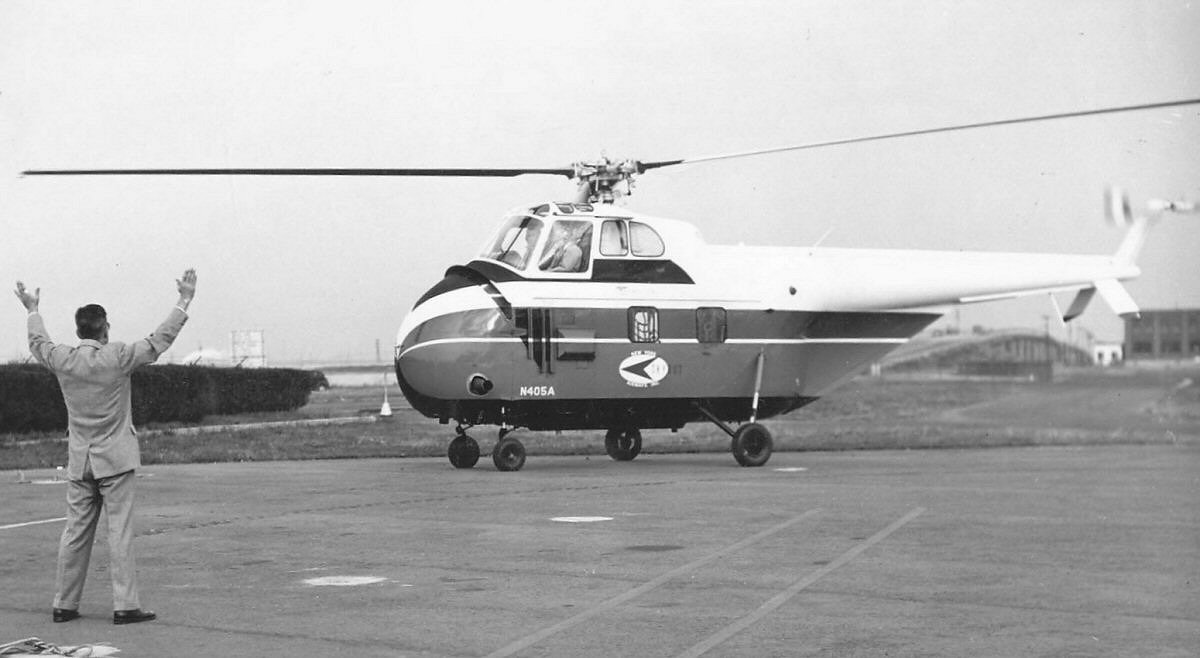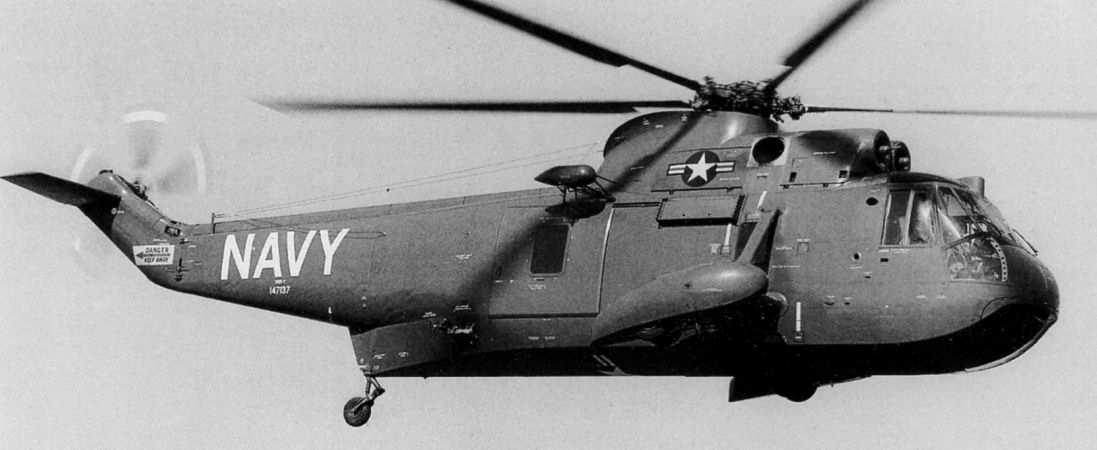
 11 March 1959: At Stratford, Connecticut, the prototype Sikorsky XHSS-2 Sea King, U.S. Navy Bureau of Aeronautics serial number (Bu. No.) 147137, company serial number 61001, makes its first flight. Sikorsky’s Assistant Chief Test Pilot Robert Stewart Decker is at the controls.
11 March 1959: At Stratford, Connecticut, the prototype Sikorsky XHSS-2 Sea King, U.S. Navy Bureau of Aeronautics serial number (Bu. No.) 147137, company serial number 61001, makes its first flight. Sikorsky’s Assistant Chief Test Pilot Robert Stewart Decker is at the controls.
The Sikorsky SH-3A Sea King was the first of the S-61 series of military and civil helicopters, designated as HSS-2 until 1962. It is a large twin-engine helicopter with a single main rotor/tail rotor configuration. The fuselage is designed to allow landing on water. The helicopter was originally used as an anti-submarine helicopter.
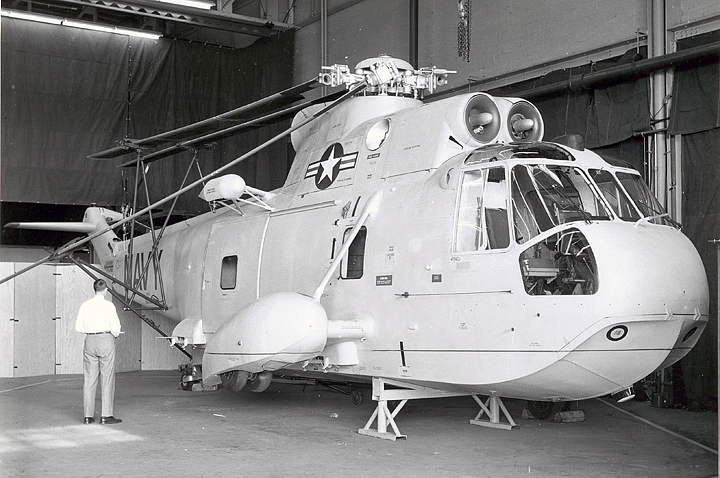
The HSS-2 is 72 feet, 6 inches (22.098 meters) long and 16 feet, 10 inches (5.131 meters) high with all rotors turning. The helicopter’s width, across the sponsons, is 16 feet. The main rotors and tail can be folded for more compact storage aboard aircraft carriers, shortening the aircraft to 46 feet, 6 inches (14.173 meters). The empty weight of the HSS-2 is 10,814 pounds (4,905 kilograms). The overload gross weight is 19,000 pounds (8,618 kilograms).
The main rotor has five blades and a diameter of 62 feet, 0 inches (18.898 meters). Each blade has a chord of 1 foot, 6¼ inches (0.464 meters). The rotor blade airfoil was the NACA 0012, which was common for helicopters of that time. The total blade area is 222.5 square feet (20.671 square meters), and the disc area is 3,019 square feet (280.474 square meters). The tail rotor also has five blades and a diameter of 10 feet, 4 inches (3.150 meters). They each have a chord of 7–11/32 inches (0.187 meters). At 100% NR, the main rotor turns 203 r.p.m. and the tail rotor, 1,244 r.p.m.
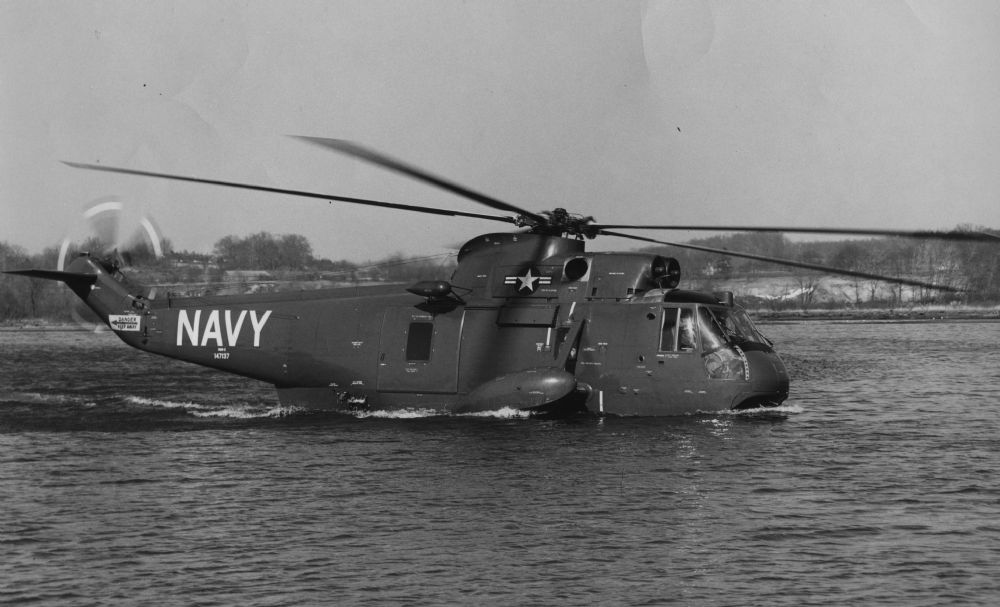
 The HSS-2 was powered by two General Electric T58-GE-6 turboshaft engines, which had a Normal Power rating of 900 horsepower, and Military Power rating of 1,050 horsepower; both ratings at 19,555 r.p.m. at Sea Level. The main transmission was rated for 2,000 horsepower, maximum. (Later models were built with more powerful T58-GE-8 engines. Early aircraft were retrofitted.)
The HSS-2 was powered by two General Electric T58-GE-6 turboshaft engines, which had a Normal Power rating of 900 horsepower, and Military Power rating of 1,050 horsepower; both ratings at 19,555 r.p.m. at Sea Level. The main transmission was rated for 2,000 horsepower, maximum. (Later models were built with more powerful T58-GE-8 engines. Early aircraft were retrofitted.)
The HSS-2 has a cruise speed of 125 knots (144 miles per hour/232 kilometers per hour) at Sea Level, and a maximum speed of 133 knots (153 miles per hour/246 kilometers per hour) at Sea Level. The service ceiling is 12,100 feet (3,688 meters). The hover ceiling at normal gross weight is 5,200 feet (1,585 meters), out of ground effect (HOGE), and 7,250 feet (2,210 meters), in ground effect (HIGE). The HSS-2 had a combat endurance of 4 hours and a maximum range of 500 nautical miles (575 statute miles/926 kilometers).
The Sea King was primarily an anti-submarine aircraft. It could be armed with up to four MK 43 or MK 44 torpedoes and one MK 101 nuclear-armed depth bomb. Other weapons loads included four MK 14 depth charges and four MK 54 air depth bombs.
In 1962, the HSS-2 was redesignated SH-3A Sea King. Many early production aircraft have remained in service and have been upgraded through SH-3D, SH-3G, etc. In addition to the original ASW role, the Sea Kings have been widely used for Combat Search and Rescue operations. Marine One, the call sign for the helicopters assigned to the President of the United States, are VH-3D Sea Kings.
Sikorsky produced the last S-61 helicopter in 1980, having built 794. Production has been licensed to manufacturers in England, Italy, Canada and Japan. They have produced an additional 679 Sea Kings.
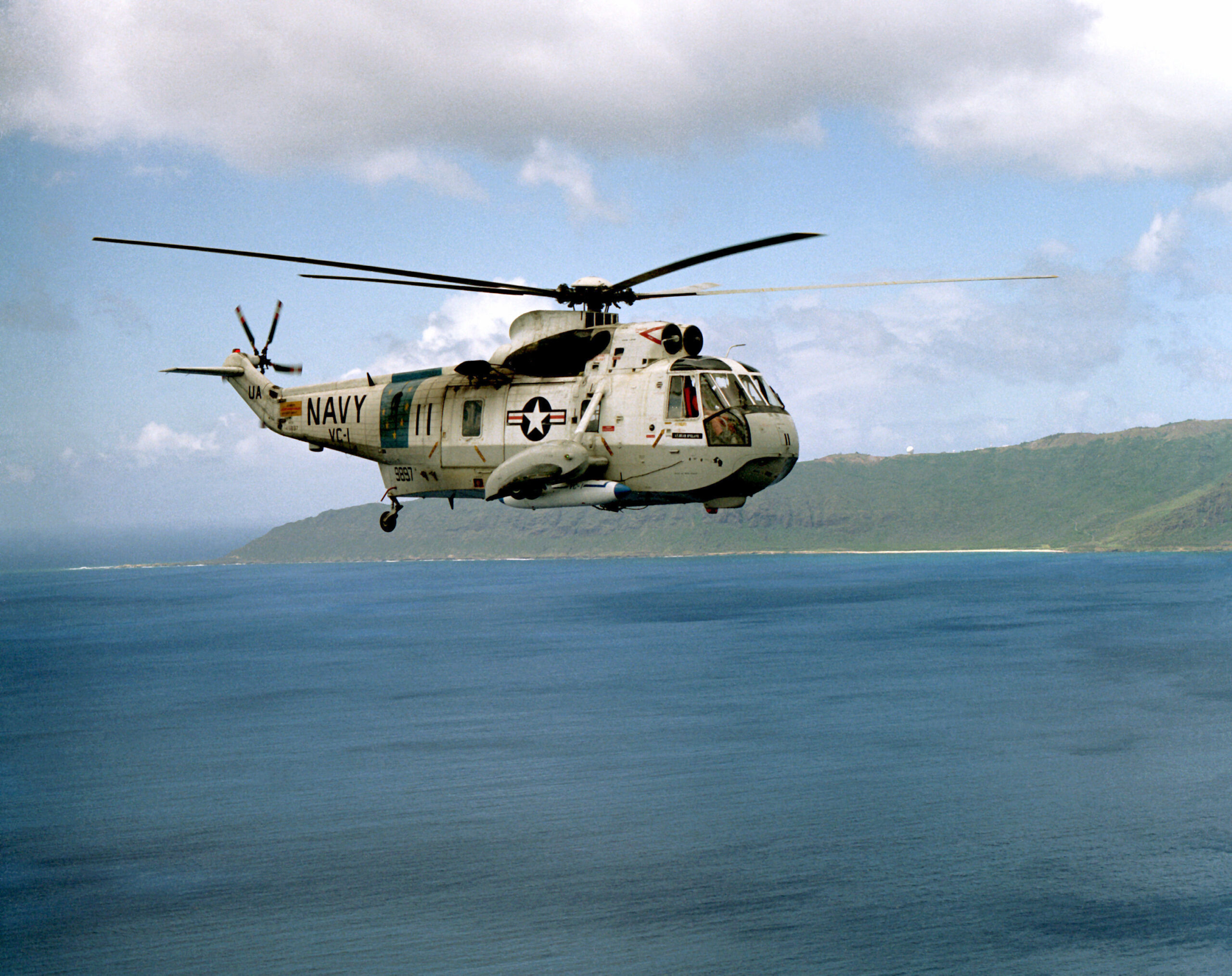
© 2019, Bryan R. Swopes
